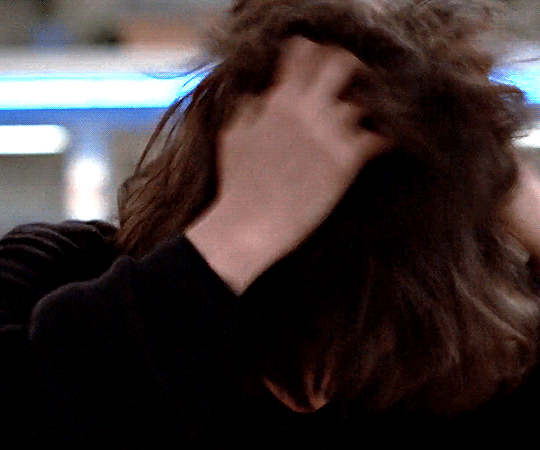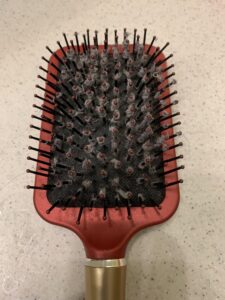When was the last time you gave your hair brush a good clean? We’re often told to clean our makeup brushes and regularly wash our hair, but hair brushes tend to get neglected in our routines. The truth is, dirty hair brushes can harbor all kinds of bacteria, including fungus and yeast, which may be contributing to that itchy, flaky, and irritated scalp. If you’re someone who struggles with scalp issues like redness or dandruff, cleaning your brush could be a simple, yet powerful, step in finding relief.
The Problem: Dirty Brushes and Scalp Irritation

Your hair brush does a lot of work. Each time you use it, it picks up oil, dead skin cells, hair product residue, and environmental dust. Over time, this build-up creates a breeding ground for bacteria, fungus, and yeast, which can transfer back onto your scalp. The result? Unwanted flare-ups like itching, flaking, and redness.
In some cases, the fungus Malassezia can overgrow, irritating the scalp and worsening conditions like dandruff and seborrheic dermatitis. If you’ve ever noticed that your scalp stays irritated despite changing shampoos or sticking to a hair care routine, your brush might be part of the issue.
How Often Should You Clean Your Hair Brushes?
To keep bacteria at bay and prevent scalp issues, aim to clean your hair brushes about once a week, especially if you’re using styling products regularly or have sensitive skin. If you have short hair or don’t use much product, you may be able to extend that to once a month. However, the more you brush and the more product build-up on your scalp, the more frequently you should be cleaning.
The Best Way to Clean Your Hair Brushes
Cleaning your hair brush is easier than you might think! Here’s a step-by-step guide to do it properly:

- Remove Hair from the Brush:
Start by manually pulling out any hair trapped between the bristles. You can use the end of a comb or a brush cleaning tool to get deeper into the base of the brush. - Soak the Brush in Soapy Water:
Fill a bowl or sink with warm water and add a gentle cleanser like shampoo or mild dish soap. These will help break down any oils and product residue without damaging the bristles. If your brush has a wooden handle, avoid submerging the handle to prevent warping. - Soak in a Bleach Solution (For Deep Cleaning):
For a more thorough clean—especially if you’ve been dealing with fungal scalp issues or have gone a long time without cleaning—mix one part bleach with nine parts water. Soak your brush for 5-10 minutes to kill off any lingering bacteria or fungus. This step is optional but highly recommended if you’ve been struggling with scalp irritation. Note: Only use this method for plastic or rubber brushes; avoid using bleach on brushes with natural bristles or wooden handles. - Scrub Between Bristles:
Use an old toothbrush to scrub between the bristles, focusing on areas where build-up is most noticeable. Be sure to reach the base of the brush where oils and residue tend to collect. - Rinse and Dry:
After scrubbing, rinse your brush thoroughly with warm water to remove all the soap. Gently shake off excess water and let the brush air dry with the bristles facing down to prevent moisture from settling at the base of the bristles.
Storing Your Hair Brushes
Proper storage can help keep your brushes cleaner for longer and reduce the growth of bacteria. Follow these tips:
- Avoid leaving brushes in humid environments, like the bathroom. Humidity encourages fungal growth, so it’s best to store brushes in a dry area.
- Use a bag when traveling or storing brushes in drawers to prevent dust and dirt from settling on them.
- After cleaning, make sure your brushes are completely dry before storing them to prevent mold or bacteria from forming.
The Benefits of a Clean Brush
Cleaning your hair brush isn’t just about scalp health—it also helps extend the life of your brush and keeps your hair looking fresh. A clean brush will distribute oils more evenly through your hair, giving it a healthy, shiny appearance. Plus, by removing product build-up and dust, you’ll reduce the chances of your hair looking greasy or flat between washes.
By making brush cleaning a regular part of your routine, you’re doing more than just protecting your scalp—you’re investing in the overall health of your hair.
Takeaway: Your Scalp Deserves Better
If you’ve been experiencing unexplained scalp irritation, redness, or flaking, it might be time to check the cleanliness of your hair tools. With just a little bit of care, you can keep bacteria at bay, improve your scalp’s condition, and enjoy healthier, more vibrant hair.
Let’s make this the week you give your hair brush the attention it deserves. Your scalp will thank you!